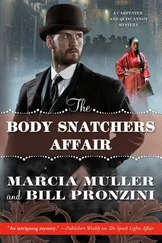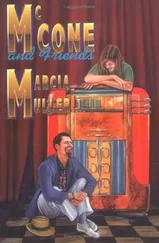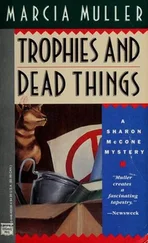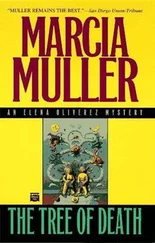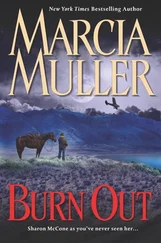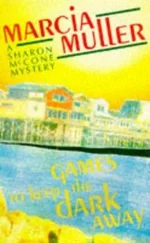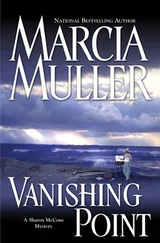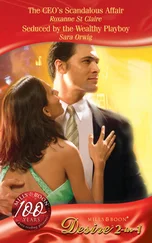Frustration had once again begun to weigh heavily on Quincannon by this time. Thwarted no matter where he looked for Jones, as he’d been thwarted in his hunt for Elias Corby. Would Cyrus Drinkwater be easier to buttonhole? Well, he would soon find out. He’d had enough of chasing around the city on the rail lines; he hired a cab to drive him to Rincon Hill.
Drinkwater was a known habitué of the Cocktail Route, the nightly bacchanal in which wealthy businessmen of all types met with friends in one of more than twenty first-class saloons between the Reception on Sutter and Dunne Brothers at Eddy and Market, to discuss business, politics, and scandal involving others and themselves, all the while consuming copious amounts of liquor and food — a ritual that often lasted all night. Men such as Drinkwater seldom arrived home before dawn or emerged again before noon on weekdays, usually much later on weekends.
The thought of rousing the old reprobate from his bed was a pleasing one, but he had no more luck at the lavish home than anywhere else on this day’s blasted runaround. The uniformed maid who answered the door informed him that Mr. Drinkwater was not in residence. Nor did she know, or refused to tell if she did, where he could be found.
Drinkwater maintained an office in a building on Turk Street near the Civic Center. He wasn’t there, either. Canvassing the array of saloons and restaurants where he might have gone to cure a hangover or fill his belly was an undertaking that held no appeal for Quincannon. He decided instead to direct his hired cab to the headquarters of the Gray Brothers Quarry Company on Sansome at Green. Drinkwater was known to make periodic rounds of his various enterprises, and his not-so-silent partnership in the Grays’ operations was second only to his ownership of West Star Brewing as a major source of income.
The quarry site was the largest in the city. George and Harry Gray, that pair of equally conscienceless rogues, had been in the quarrying business for nearly thirty years. They had established their Telegraph Hill quarry and rock crusher some four years before, an ideal location for their purposes; the unstable cliff was composed of the sandstone geologists called greywacke mixed with laminated shale, a hard serpentine perfect for their manufacture of the artificial stone used for paving city sidewalks and curbs. They had blown up huge chunks of the rock face, reputedly using ninety kegs of dynamite in the original detonation — heedless of the homes perched on the hilltop nearby and the citizens who lived in them. In January of ’94, one explosion caused a rockslide that crushed a duplex on Vallejo Street, but despite the fact that the owner received a $3,000 judgment against the Grays, it did nothing to bring about so much as a temporary stoppage of the careless dynamiting. It wasn’t until a shoemaker’s house at the corner of Union Street and Calhoun Terrace was blown off its foundation the following year that a judge issued a permanent injunction forbidding any more blasting.
But such injunctions meant nothing to such men as the Grays and Cyrus Drinkwater. The brothers opened another quarry on Douglass Street in Noe Valley, meanwhile making use of their powerful political connections and bribes to various city officials to keep that equally dangerous and damaging enterprise going. And to eventually resume their systematic destruction of Telegraph Hill in spite of the judge’s “permanent” injunction.
From the look of the ruptured yellow-brown face of the hill now, the Grays’ publicly stated intention to level it entirely and to then open a brick factory on the site seemed a bleak likelihood. Tons of rock already had been crushed and transported to construction sites by teams of men and horse- and mule-drawn wagons, and even though it was Saturday, what appeared to be a full crew was at work in the quarry when Quincannon arrived. The chilly, now sunless afternoon was filled with the ring of singlejack hammers breaking rock, the thunderous grinding clatter of chunks being loaded into and pulverized by the crusher, the rattle of heavily laden dray wagons departing and empty ones arriving, the profane voices of the laborers.
The quarry noise was matched by the passing clatter and rumble of railcars on the city’s unique minirailroad, the Belt Line, that ran along the northeastern waterfront, servicing businesses and transporting offloaded freight from ships anchored at the busy piers. The line had begun operations in 1890 and ran for 3.2 miles from the foot of Lombard Street to the Ferry House; rail traffic south of that point was controlled by Southern Pacific. Its small roundhouse was located nearby, at the corner of Sansome and the Embarcadero. If blasting were being done at the quarry today, which at present it wasn’t, the din in the area would have been deafening.
The Gray Brothers offices were housed in a plain board-and-batten building farther up Sansome, at a safe distance from the ravaged hillside. Two conveyances were parked in the wagon yard alongside, one a large four-wheeled, four-passenger, two-horse Whitechapel carriage, its liveried driver lounging on the high seat. The carriage was painted a dark maroon color with matching dusters and folding hood, the moldings decorated with a wide cream-colored stripe. It was deliberately distinctive among such equipage, often sighted on the city streets; as soon as Quincannon saw it and the waiting driver, a hulking individual named Bruno who doubled as Cyrus Drinkwater’s bodyguard, he knew he’d finally found the elusive businessman.
A tired and grumpy-looking clerk — the Gray brothers, in addition to their other shortcomings, demanded long hours from their employees and paid low wages — informed Quincannon that Mr. Drinkwater had been in conference with Mr. Harry Gray for the past half hour. How long the conference would last he didn’t know. Quincannon said he would wait.
His patience had worn thin and his mood was dark when the two conspirators finally emerged from the rear of the building. He had never had the unpleasure of meeting either, but their photographs had often appeared in the newspapers. They were completely different in size and appearance: Harry Gray, a large, graying, clean-shaven man with a substantial corporation over which he wore an immense gold watch chain; and Drinkwater, an inch above six feet, almost cadaverously thin, his bony face adorned with reddish Dundreary whiskers — the flowing sideburns, nearly a foot long in his case, named after those worn by the lead character in the popular British play Our American Cousin . Evidently their conference had been a successful one, no doubt involving money, rascality, or both; they continued to share a chuckle as they shook hands and said their good-byes.
Gray went back inside his office and Drinkwater turned toward the door. He carried a maroon-colored umbrella so tightly furled that it also served him as a walking stick. As he passed the desk, the overworked clerk said deferentially, “The gentleman there is waiting to see you, Mr. Drinkwater. He wouldn’t give his name, sir.”
Drinkwater’s pale eyes widened slightly when his gaze rested on Quincannon, who had risen. Then he donned a falsely sunny smile. “I know his name,” he said, advancing. “Though we’ve never had the pleasure of making each other’s acquaintance. How do you do, Mr. Quincannon?”
“Well enough, considering.” He accepted Drinkwater’s extended hand, found it dry and leathery, and released it.
“Good, good. How did you know I was here, may I ask?”
“I didn’t. I came on the chance.”
“Ah. Well, sir. What is it you want of me?”
“A few minutes of your time. Private conversation on a matter of mutual interest.”
The sunny smile dipped a little, sardonically. “At your service. Shall we go outside?”
Читать дальше

